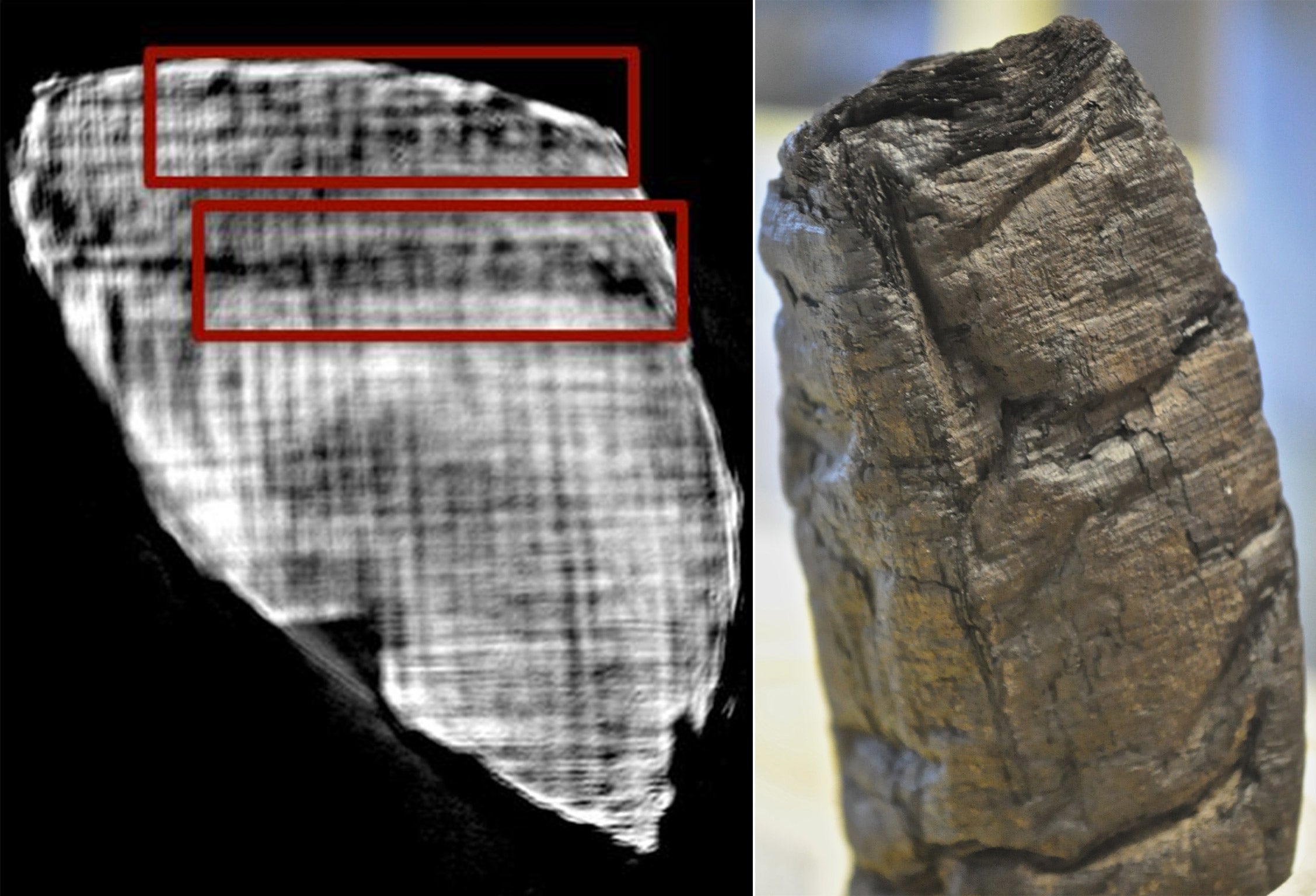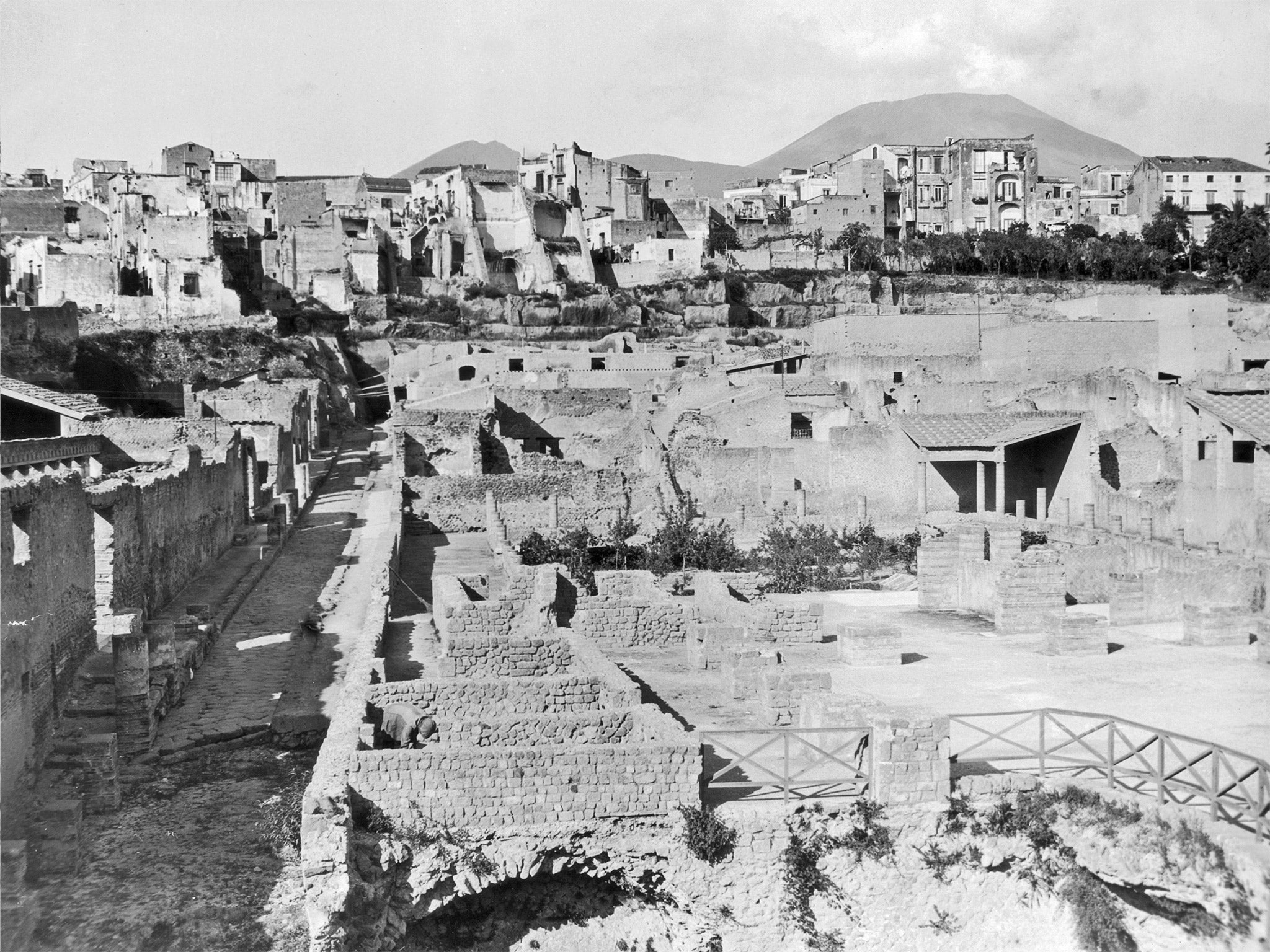Ancient texts on papyrus scrolls damaged during 79AD eruption of Mount Vesuvius can be deciphered at last
Scientists use powerful X-ray to analyse nearly 2,000 year-old scrolls that cannot be unrolled without destroying them

Your support helps us to tell the story
From reproductive rights to climate change to Big Tech, The Independent is on the ground when the story is developing. Whether it's investigating the financials of Elon Musk's pro-Trump PAC or producing our latest documentary, 'The A Word', which shines a light on the American women fighting for reproductive rights, we know how important it is to parse out the facts from the messaging.
At such a critical moment in US history, we need reporters on the ground. Your donation allows us to keep sending journalists to speak to both sides of the story.
The Independent is trusted by Americans across the entire political spectrum. And unlike many other quality news outlets, we choose not to lock Americans out of our reporting and analysis with paywalls. We believe quality journalism should be available to everyone, paid for by those who can afford it.
Your support makes all the difference.Ancient classical texts written on papyrus scrolls blackened by the intense heat of being buried in volcanic ash have been read for the first time without them being unrolled and destroyed, scientists said.
The scrolls came from the library of a villa destroyed by the eruption of Mount Vesuvius in 79AD, near present-day Naples, which wiped away several Roman towns including Pompeii and Herculaneum.
For centuries, their contents were a mystery because of the difficult of deciphering the words, written in ink made from blackened soot, from the surrounding papyrus, which was the same colour and texture having been incinerated by the volcanic fallout.
An added difficulty was being able to see the words of the text within the inner layers of the rolled-up scroll. Unfurling them flat often destroyed them because they are so brittle, the scientists said.
However, in a scientific breakthrough, the researchers have used a sophisticated X-ray machine called the European Synchotron in Grenoble to peer inside two rolled-up scrolls and see the individual letters of a segment of text written in ancient Greek.
“After several trials to select the most readable samples from the scanned images, there is no longer any doubt. The dark curves cannot be confused with the papyrus fibres,” said Daniel Delattre from the Institut de Recherche et d’Histoire des Textes in Paris.
“We were able to decipher letters from several layers from inside the rolled-up scroll without destroying it. Naples and the surrounding area was populated by people who speaking Greek so it is not very surprising that we found many Greek scolls,” Dr Delattre said.
The papyrus scrolls were among hundreds that emerged in 1754 when an entire library was discovered in a small room of a large villa in Herculaneum thought to have belonged to the wealthy Roman statesman Calpurnius Piso Caesonius.

Several techniques were used over the years to unroll some of the scrolls in order to study their texts but this led to an unacceptable degree of damage and so this approach was abandoned some years ago in favour of a non-destructive method.
The X-ray technique, detailed in the journal Nature Communications, is called phase-contrast tomography and is able to penetrate several layers of the scroll and decipher the contrast between the blackened soot of the ink from the blackened material of the papyrus.
The process has enabled the scientists to build up a collection of letters of the Greek alphabet and to even determine the handwriting used in the text, along with its likely author.
By analysing the writing and comparing it with other texts, the researchers came to the conclusion that the text could be by the Epicurian philosopher Philodemus, who was teaching in his school in the region of Campania during the first century before Christ, the scientists said.
Dr Delattre said it should be possible to refine the technique still further to make it easier to use and more accurate so that eventually it could be employed to read the hundreds of unrolled papyrus scrolls discovered at ancient sites around the world.
Join our commenting forum
Join thought-provoking conversations, follow other Independent readers and see their replies
Comments